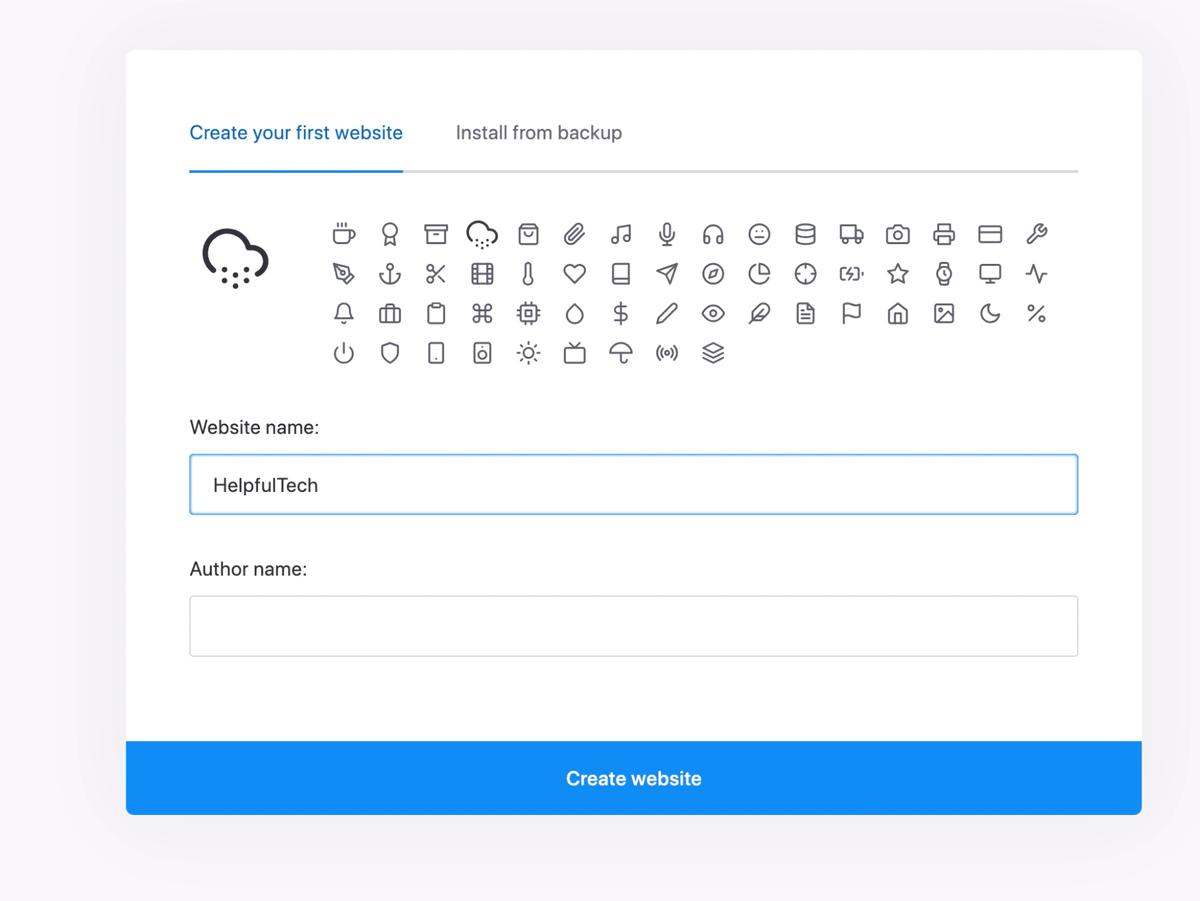What are the core concepts of DeFi Business? Beginner’s Guide( Learning the DeFi Slang)

In this article, we explain all the terms related to decentralized finance (DeFi) that we could think of. For example, when I first got into DeFi, I was confused by the jargon. This guide would have helped me understand all those complex terms right from the start.
Table of Contents
- Total Value Locked (TVL)
- Yield Farm
- Wallet
- Swap
- Swap Fee
- Tokenomics
- Smart Contract
- Stablecoin
- Slippage Tolerance
- Rug Pull
- Public / Receive Address
- Private Key
- Referral Reward
- Price Impact
- Price Slippage
- On-Chain
- Off-Chain
- Bridge
- Market Order
- Maximal Extractable Value (MEV)
- Automated Market Maker (AMM)
- LP Tokens
- Approval
- Liquidity Provider (LP)
- Liquidity Source
- Annual Percentage Yield (APY)
- Liquidity Pool
- Block Explorer
- Liquidity
- Impermanent Loss
- Impermanent Loss Insurance
- Internal Commission
- Honeypot
- Gas Fees
- Gas Limit
- Governance Staking
- Governance Token
- Immutability
- Block Reward
- Instadapp
Total Value Locked (TVL)
Gross Value Locked (GVL) is the total worth of assets that are staked or locked in a specific protocol, often expressed in terms of USD or other fiat currencies. For instance, let’s say I decide to invest in a decentralized finance (DeFi) platform. I lock in $10,000 worth of cryptocurrency to earn interest. This $10,000 contributes to the platform's GVL.
The higher the GVL, the more trust and stability users tend to perceive in that platform, as it indicates substantial investment and engagement from the community.
Yield Farm
A yield farm, also called a liquidity mining program, lets liquidity providers stake their LP tokens to earn extra rewards. These rewards encourage them to keep their funds in the pool, reducing the impact of impermanent loss and making better use of their existing assets. For example, when I joined a yield farming program, I staked my LP tokens and earned additional tokens, which motivated me to continue providing liquidity and maximizing my investment.
Wallet
A wallet is where users store, send, and receive tokens or other forms of value. For instance, I use a digital wallet app to manage my cryptocurrency, allowing me to easily send Bitcoin to a friend or receive Ethereum from a transaction.
Swap
Swapping means exchanging one asset for another at a specific rate. For instance, when I wanted to switch my Bitcoin for Ethereum, I did a swap, trading my Bitcoin for an equivalent amount of Ethereum based on the current rate.
Swap Fee
On every blockchain Network, each swap comes with a small fee. This fee is distributed to governance stakers, who then vote on its use. For example, when I make a trade on 1inch, a tiny portion goes to these stakers, giving them a say in how the platform evolves.
Tokenomics
Tokenomics refers to the economic aspects of a token, such as its circulating supply, distribution schedule, minting and burning processes, and internal fees. For instance, when I researched a new cryptocurrency, I looked into its tokenomics to understand how many tokens are available, how they are distributed, and any mechanisms for creating or destroying tokens, which helped me make an informed investment decision.
Smart Contract
A smart contract is a blockchain feature that automatically performs actions when certain conditions are met. For example, I used a smart contract to sell my digital artwork, which automatically transferred the ownership to the buyer once they paid the agreed amount.
Stablecoin
A stablecoin is a type of token that maintains a steady value by being pegged to another currency or asset. For example, I use a stablecoin like USDT, which is tied to the US dollar, to avoid the volatility of other cryptocurrencies while still making digital transactions.
Slippage Tolerance
Slippage tolerance refers to the maximum percentage of price change you're comfortable with during a trade. For instance, when I set a slippage tolerance of 1% for buying a cryptocurrency, I'm okay with the price fluctuating up to 1% higher than the current market price at the time of execution.
Rug Pull
Rug pulling is a frequent scam method where the person who provided liquidity or created the token removes most of their funds from the pool. This action leaves those who invested in the token with little to no value, essentially losing their money. For instance, I once heard about a rug pull scam where investors lost all their money because the creators vanished with the majority of the liquidity, leaving behind worthless tokens.
Public / Receive Address
A public address, made up of 42 random characters, serves as a destination for funds when someone wants to send them. This address is shareable and often seen in QR code form for easy scanning. For instance, when I wanted to receive payment in cryptocurrency, I provided the sender with my public address, allowing them to transfer the funds directly to me.
Private Key
A private key is a 64-character string of hexadecimal characters that provides access to funds within a wallet. Just like a recovery phrase, this key is crucial for managing the wallet's assets and should never be shared with anyone else. For example, I keep my private key secure because it's like the key to my digital safe, allowing me and only me to control my cryptocurrency funds.
Referral Reward
A referral reward is an incentive given to users who introduce others to the Liquidity Protocol. The community votes on the amount, and it's distributed weekly. Additionally, if trades go through other protocols, referrers might get a share of the spread surplus. For instance, I earned a referral reward when my friend signed up for using my link, and I also received a bonus because their trade benefited from other liquidity sources.
Price Impact
Price impact measures how much a trade affects the market price of a specific asset pair. It's closely tied to the liquidity and volume available in the pool. For example, when I made a large trade, the price impact was significant because there wasn't much liquidity available, causing the market price to shift noticeably.
Price Slippage
Slippage refers to the variation in prices from when a market order is initiated to when it's executed on the blockchain or filled. It can be either positive or negative, depending on whether the price moves in favour of the buyer or seller. For instance, when I placed a market order for a cryptocurrency, I experienced slippage because the final price I paid differed from the initial price due to market fluctuations during the transaction.
On-Chain
On-blockchain transactions are external processes that happen directly on a blockchain, visible to anyone through a block explorer. For example, when I sent cryptocurrency to a friend, the transaction details were recorded on the blockchain, and I could check them using a block explorer to confirm the transfer.
Off-Chain
Off-chain transactions refer to any processes or systems that happen independently from a blockchain. For instance, when I transfer money from my bank account to another person's account, it's an off-chain transaction because it doesn't involve the blockchain; instead, it's managed by the banking system.
Bridge
A decentralized bridge protocol facilitates the conversion of tokens with identical contract addresses across different blockchains. This enables seamless interoperability, allowing users to transfer tokens between networks. For instance, I used a decentralized bridge protocol to convert my Ethereum-based tokens to their equivalent on the Binance Smart Chain, enabling me to access different DeFi opportunities across multiple blockchains.
Market Order
A market order is a request to buy or sell tokens immediately at the present market price. For example, if I want to buy Bitcoin quickly at its current price, I'd place a market order, and the trade would be executed promptly at the prevailing market rate.
Maximal Extractable Value (MEV)
MEV, formerly known as "Miner Extractable Value," refers to validators on a blockchain rearranging transactions within a block to maximize gains for themselves or others involved in the transaction.
A multi-signature wallet is an ultra-secure digital asset wallet that mandates multiple parties to authorize every transaction made with it. For instance, my team uses a multi-signature wallet for our cryptocurrency holdings, requiring approval from all members before any funds can be moved.
Automated Market Maker (AMM)
Automated Market Maker (AMM) is a decentralized pricing mechanism that employs mathematical formulas, often x*y=k, to manage the asset supply within a liquidity pool. This formula ensures that the product of the quantities of two assets remains constant, thus balancing their prices based on demand. For example, when I provided liquidity to a decentralized exchange, the AMM formula automatically adjusted the prices of the assets in the pool to maintain equilibrium, allowing for efficient trading without the need for traditional order books. Also read What is a DeFi yield aggregator?
LP Tokens
Liquidity Provider Tokens, also called "Liquidity Provider Tokens," are created and given to liquidity providers as a representation of their contributed assets. These tokens act as placeholders for their liquidity. In some liquidity mining programs, LP tokens can be utilized to earn extra rewards, aiming to counteract impermanent loss. For instance, when I provided liquidity to a decentralized exchange, I received LP tokens proportional to my contribution, which I then used to participate in liquidity mining and boost my overall rewards.
Approval
Approving is granting permission to the 1inch smart contract to utilize your assets. Miners in the network receive compensation in the form of a gas fee, paid by you, for recording this action on the blockchain. For instance, when I approved the 1inch smart contract to access my tokens for a swap, I paid a gas fee to ensure the transaction was processed by miners on the blockchain network.
Liquidity Provider (LP)
A liquidity provider is someone who contributes liquidity, typically in equal amounts of two tokens, to a pool. Their goal is to earn a share of the trading fees generated within that pool as a reward. For instance, I became a liquidity provider on a decentralized exchange by depositing equal amounts of Ethereum and a stablecoin into a liquidity pool, allowing me to earn a portion of the trading fees whenever someone swaps between those two assets.
Aslo read; How to Yield Farm In DeFi ( step-by-step )
Liquidity Source
A liquidity source is where a swap can access liquidity. This can be native liquidity pools, decentralized exchanges, centralized financial institutions, or private market makers. For example, when I wanted to swap one cryptocurrency for another, I had multiple options for liquidity sources, including using a decentralized exchange or accessing liquidity from private market makers.
Annual Percentage Yield (APY)
APY, or Annual Percentage Yield, represents the compounded annual rate of return for capital invested in a protocol, such as liquidity pools or the 1inch liquidity mining program. It reflects the overall growth of the investment over time, considering factors like rewards and compounding interest. For example, when I participate in a liquidity pool, the APY indicates how much my investment is expected to grow annually, factoring in rewards earned from providing liquidity.
Liquidity Pool
A liquidity pool is a smart contract that holds tokens for trading, managed by an automated market maker (AMM). Whenever a trade or swap occurs within the pool, a small fee is generated and distributed to Liquidity Providers as a reward for supplying liquidity. For instance, I contributed my tokens to a liquidity pool on a decentralized exchange, and every time someone traded using that pool, I received a portion of the trading fees as an incentive for providing liquidity.
Block Explorer
A blockchain explorer is a tool that allows users to search and browse through all the accessible data on a specific blockchain. It provides details about transactions, blocks, addresses, and other relevant information stored on the blockchain. For example, when I wanted to track a transaction on the Ethereum blockchain, I used a blockchain explorer to view its status, confirmations, and other relevant details.
Liquidity
Liquidity refers to the capacity for money to enter or exit a market without significantly impacting the market price. It gauges the market's ability to absorb large transactions with minimal price movement. For instance, when considering whether to buy or sell a cryptocurrency, I look at Liquidity to assess how easily I can execute my trade without causing significant price fluctuations.
Impermanent Loss
Impermanent loss occurs when a liquidity provider experiences a temporary decrease in funds because of an imbalance in the supply of tokens within a liquidity pool. This imbalance arises from the fluctuating value between the paired tokens. For example, when I provided liquidity to a decentralized exchange, I encountered impermanent loss as the relative prices of the tokens in the pool changed over time, affecting the overall value of my investment.
Impermanent Loss Insurance
Impermanent loss insurance is a service provided to liquidity pool providers (LPs) to mitigate the risk of impermanent loss. LPs pay a premium for this insurance, similar to any other insurance policy. Bancor is one platform that offers impermanent loss insurance to LPs. For instance, when I provided liquidity to a decentralized exchange, I opted for impermanent loss insurance offered by Bancor, ensuring that my investment was protected against potential losses due to market volatility. Also read What Is Impermanent Loss In DeFi & How To Avoid It?
Internal Commission
Internal commission refers to a token's inherent fee system, which redirects a portion of tokens during transfers. Typically, this commission is allocated to various destinations such as a burn address, a development fund, or distributed among token holders. For instance, when I transferred a token with an internal commission mechanism, a fraction of the tokens was automatically deducted and sent to support ongoing development or reduce the token's overall supply.
Honeypot
A honeypot token is a prevalent scam scheme where the creator embeds complex traps in the contract code, preventing investors from selling their newly acquired tokens. These traps can include locking up funds or manipulating prices to deceive investors. For example, I once encountered a rug pull token where, after investing, I found myself unable to sell my tokens due to hidden restrictions in the contract code, resulting in a loss of my investment.
Gas Fees
A blockchain gas fee is a charge paid to validators for their efforts in verifying transactions and adding them to the network. This fee compensates validators for the computational resources and capital investment required to maintain the blockchain's integrity. For instance, when I made a cryptocurrency transaction, I included a transaction fee to ensure my transaction was processed promptly and securely by validators on the blockchain network.
Gas Limit
Gas limit refers to the highest blockchain gas fee a user is prepared to pay for a single transaction. This limit can be personalized within the crypto wallet, allowing users to control their transaction costs according to their preferences. For instance, when I used the 1inch Wallet to send Ethereum, I adjusted the gas limit to ensure I wasn't overpaying for transaction fees, giving me more control over my spending.
Governance Staking
Governance staking involves community members locking up their tokens in return for the opportunity to vote on different aspects of DeFi protocols. This gives them a say in decisions like protocol upgrades or fee adjustments. For example, I participated in governance staking by locking up my tokens, which allowed me to vote on proposed changes to a DeFi protocol, ensuring my voice was heard in the decision-making process.
Governance Token
A governance token is a specialized token created to serve as a means of governance within a protocol. Holders of these tokens, known as stakeholders, use them to vote on the future direction of the protocol's development. While some individuals may trade these tokens on open markets for speculative purposes, their primary function lies in facilitating decision-making and legislative processes within the protocol. For example, I own governance tokens for a decentralized platform, allowing me to participate in voting on proposed changes and upgrades to the protocol's functionalities, giving me a direct say in its development.
Immutability
In blockchain and DeFi, immutability refers to the permanent nature of transactions once they are recorded on a blockchain. Once a transaction is confirmed and added to the blockchain, it becomes unchangeable and cannot be tampered with. Immutable essentially means "set in stone," indicating that the information recorded on the blockchain is permanent and cannot be altered. For example, when I made a cryptocurrency transaction, I appreciated the immutability of the blockchain because it ensured that my transaction history remained transparent and tamper-proof.
Block Reward
Block rewards are freshly created tokens or coins given to miners or validators as a reward for confirming transactions within a block on a blockchain. This incentivizes their participation in maintaining the network's security and integrity. Block rewards are a fundamental aspect of all mainstream consensus mechanisms. For instance, when I participated in validating transactions on a blockchain network, I received block rewards as compensation for my contribution to securing the network and validating transactions.
Instadapp
Instadapp is a decentralized finance (DeFi) application (dApp) designed to streamline the management of various DeFi investments through a single interface. INST serves as the native token for this network. For example, I use Instadapp to monitor and manage my decentralized finance investments across different protocols, all within one convenient platform, and I can use INST tokens for various functions within the ecosystem, such as governance or earning rewards.



